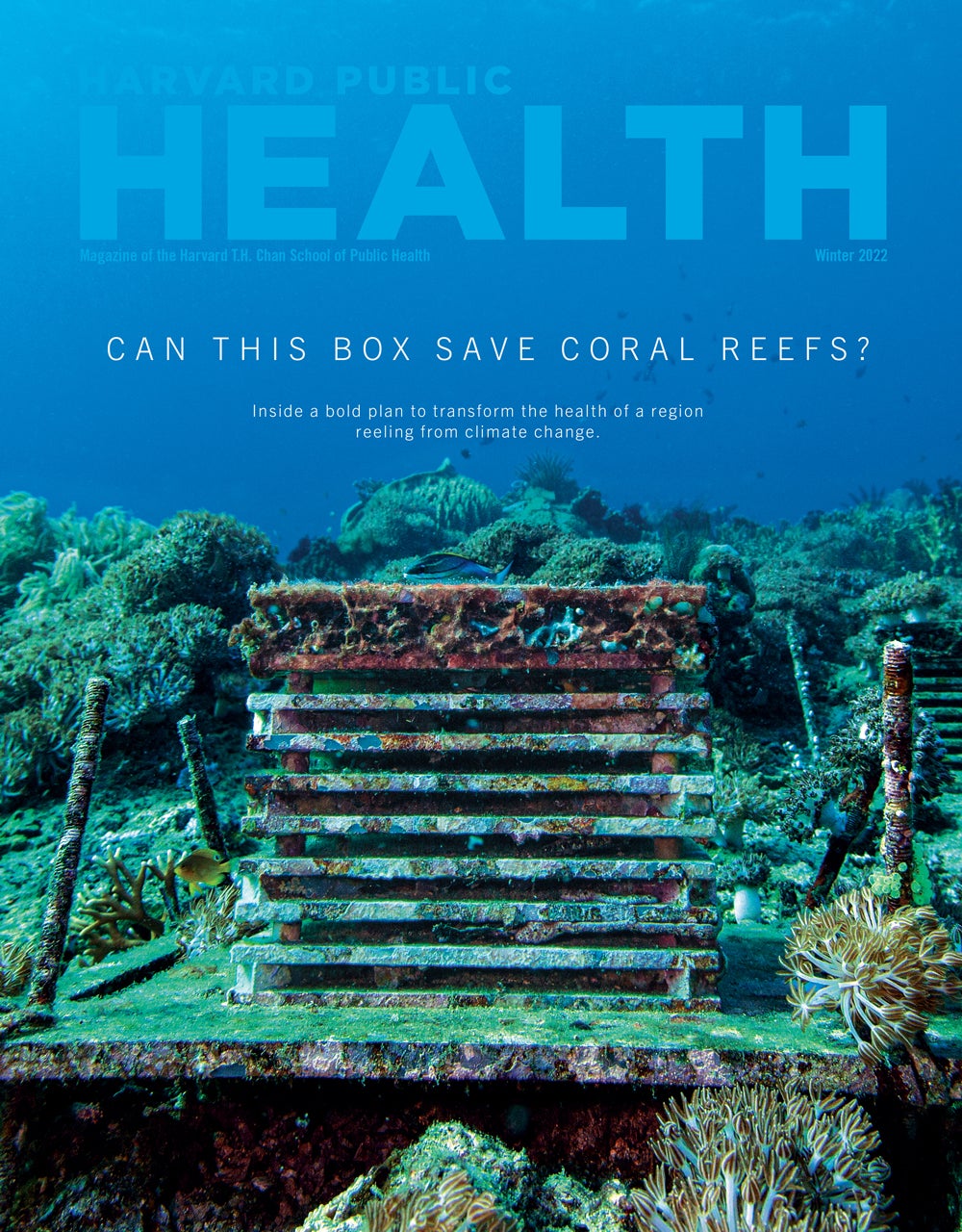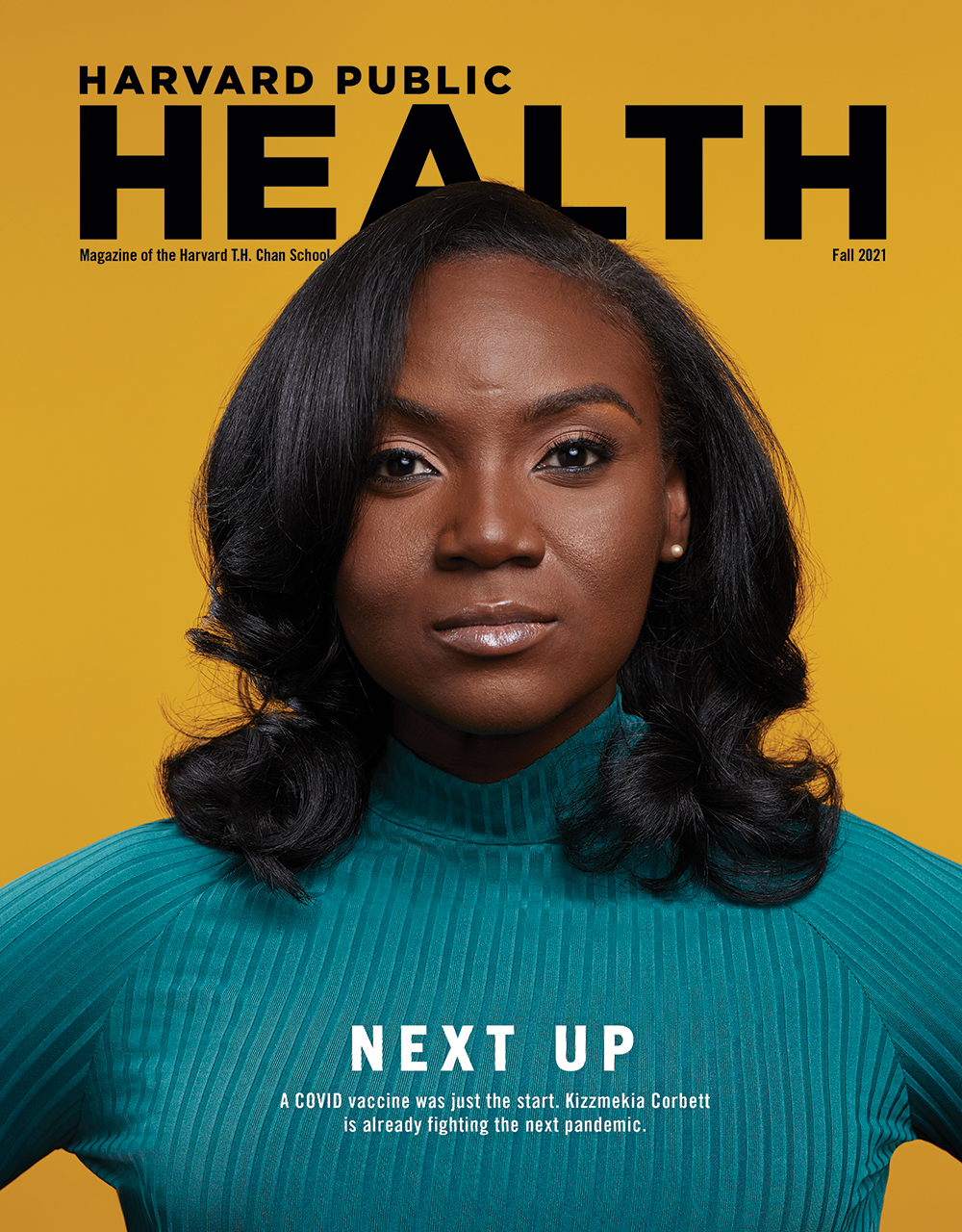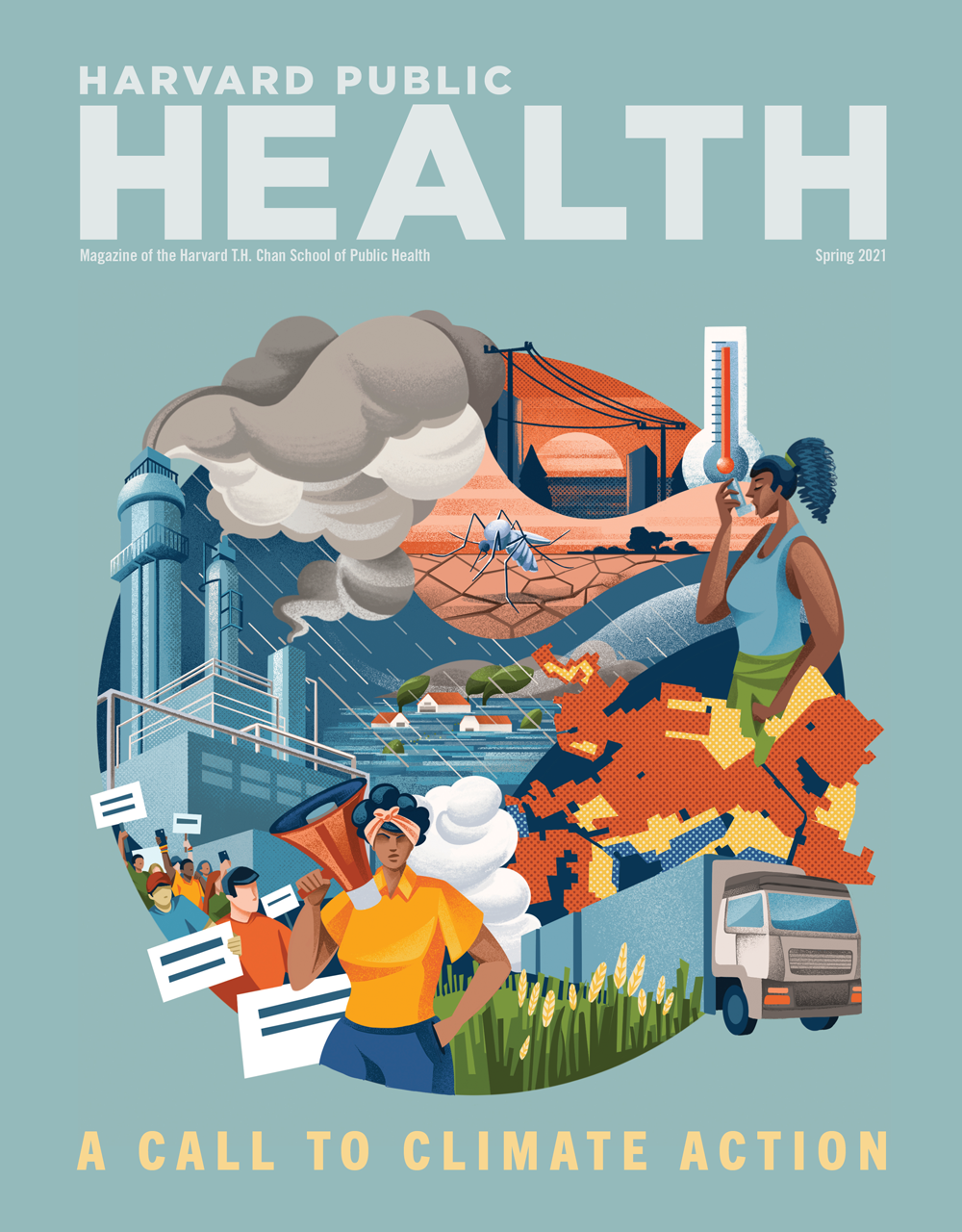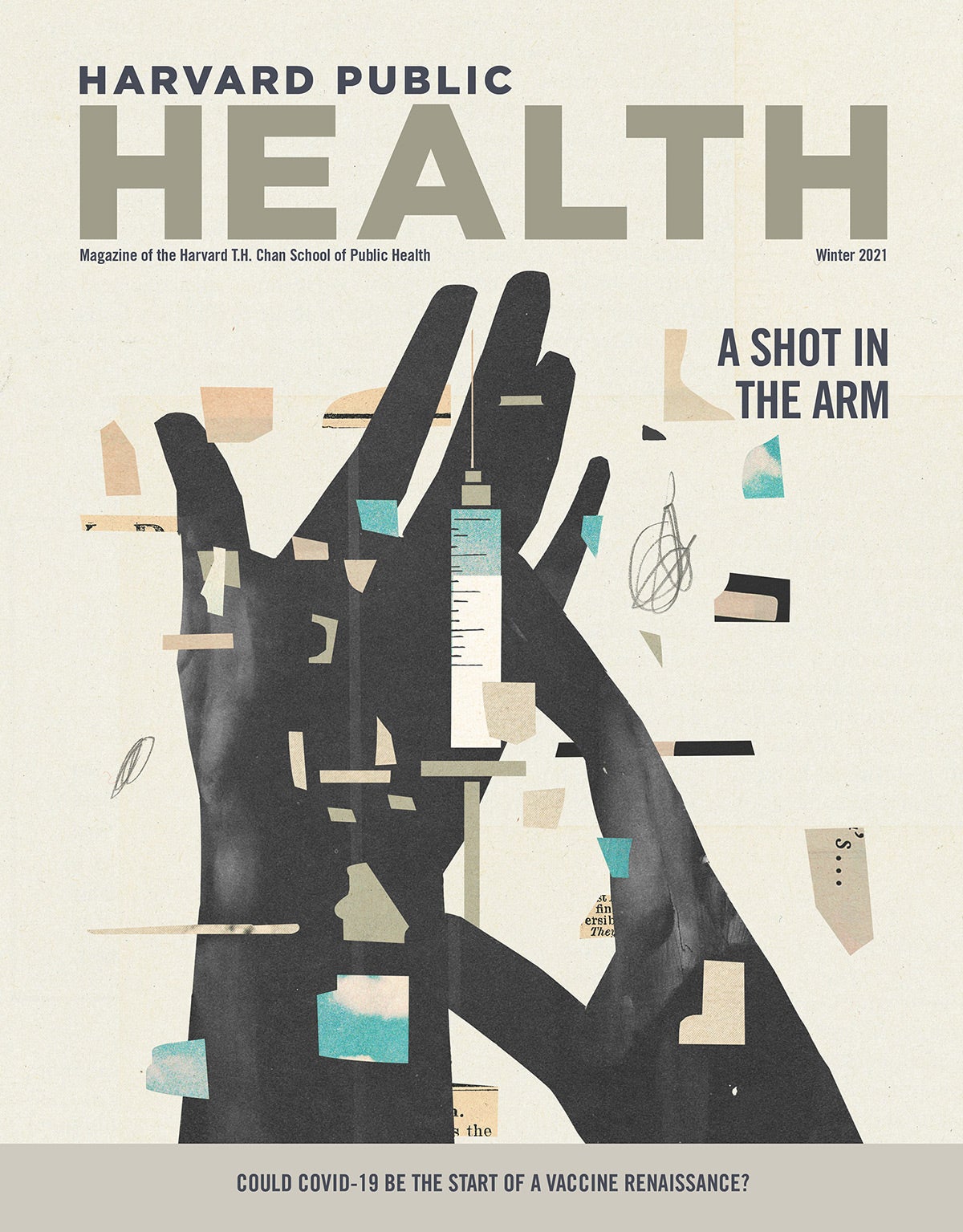 Racism is a public health crisis
Racism is a public health crisis
The killing of George Floyd by police and the disproportionate impact that COVID-19 has had on people of color are only the two latest examples of how structural racism can lead to devastating health outcomes. In June, the Harvard Chan School launched a new website highlighting research and commentary from members of the School community that address racism and, ultimately, aim to help shape a fairer, more just, and healthier world. See: hsph.me/racism-publichealth.
In a June interview with CNN, David R. Williams, Florence Sprague Norman and Laura Smart Norman Professor of Public Health and chair of the Department of Social and Behavioral Sciences, described his research showing that when police kill unarmed African Americans, the entire African American community in the state in which the death occurs experiences increased mental health symptoms for the subsequent three months.
When Boston declared racism a public health crisis in June, Mary T. Bassett, François-Xavier Bagnoud (FXB) Professor of the Practice of Health and Human Rights and director of the FXB Center for Health and Human Rights at Harvard University, noted that while the declaration was well written, the $12 million allocated to addressing its goals was inadequate. “The actions that will be needed to address centuries’ worth of deprivation will require a substantial realignment of how we set our budgets,” she said. “We need to see our budgets as moral documents.”
New Superfund Research Center will explore metals’ effects on cognitive health
The Harvard Chan School was awarded a five-year, multimillion-dollar federal grant from the National Institutes of Health in March to establish a Superfund Research Center to study the effects of metals and metal mixtures on cognitive health in late life. Research has shown that most neurodegenerative diseases may be significantly influenced by environmental factors such as air pollution and drinking-water contamination, says Quan Lu, professor of environmental genetics and physiology and principal investigator and director of the new Superfund Metals and Metals Mixtures: Cognitive Aging, Remediation, and Exposure Sources (MEMCARE) Center. Among other activities, the center will test a new hypothesis: that childhood is a critical window for exposure. Research will include study of toenails and baby teeth donated by participants from a Missouri cohort study, which will be used to look for associations between metal concentration and cognitive health.
Calculating the toll of eating disorders in the U.S.
Eating disorders take a roughly $60 billion toll on the U.S. economy each year through health care, lost productivity, and other costs, according to a report released June 24 by the Harvard Chan School STRIPED (Strategic Training Initiative for the Prevention of Eating Disorders) Program, in collaboration with the Academy for Eating Disorders and Deloitte Access Economics. The report—the most comprehensive examination to date of the social and economic burden of eating disorders in the U.S., according to the researchers—estimates the direct cost of eating-disorder treatment, as well as additional costs to individuals, families, and society, including informal caregiving and losses in well-being.
Human Immunomics Initiative will decode immune system, speed new vaccines
A new joint project between the Harvard Chan School and the Human Vaccines Project aims to revolutionize understanding of the human immune system and speed the creation of effective vaccines, diagnostics, and treatments for a wide range of diseases. “Successful vaccination requires four components—knowing the vaccine target, what kind of immune response you want, how to generate that response, and understanding responses in the people who you want to vaccinate,” says Sarah Fortune, chair of the Harvard Chan School’s Department of Immunology and Infectious Diseases. By addressing critical knowledge gaps, particularly around the second two components, she adds, “We can envision a day when there are modular blueprints for successful vaccines that speed the process and increase likelihood of success.”
New model can identify those at greater risk of developing pancreatic cancer
A pancreatic cancer risk model that includes clinical factors, genetic variants, and circulating biomarkers was able to identify more people who could benefit from screening than models using clinical factors alone, according to a study published in April in Cancer Epidemiology, Biomarkers & Prevention. Although rare, nearly 80 percent of pancreatic cancer patients are already in an advanced, incurable stage of the disease by the time they are diagnosed, making pancreatic cancer the third-leading cause of cancer death in the U.S. According to senior author Peter Kraft, professor of epidemiology, “Catching it at an earlier stage makes it more likely that surgery will be an option, increasing the chances of survival.”
Harvard Public Health wins writing awards
Harvard Public Health magazine recently won two national writing awards. “Seeking the Path of Least Resistance”—a deeply reported story on the antibiotic-resistance crisis, published in the fall 2019 issue and written by editor Madeline Drexler—received the 2020 Silver Award for Feature Writing in the CASE (Council for Advancement and Support of Education) Circle of Excellence Awards. It was Drexler’s third national CASE Award since 2014. The story also received the 2020 Clarion Award for Magazine Feature Article.
When Public Health Means Business

A live Q&A with Anthony Fauci, director of the National Institute of Allergy and Infectious Diseases, garnered the highest viewership and engagement of any event ever hosted by the Harvard Chan School.
The August 5th virtual event—part of the School’s “When Public Health Means Business” symposia series—was also broadcast live on CNN Newsroom.
It was moderated by CNN’s Sanjay Gupta and featured questions from Harvard Chan faculty. Fauci was introduced by Harvard University President Larry Bacow and Harvard Chan School Dean Michelle A. Williams.
Asked why the U.S. has fared so poorly in battling the coronavirus pandemic, Fauci offered several reasons:
Some states began reopening before their COVID-19 cases fell to low enough levels; states reopened at different paces; and residents’ adherence to reopening guidelines varied among states.
Fauci’s main message: If universally followed, basic public health measures are enough to send the coronavirus into retreat. The measures include wearing masks, keeping adequate distance between people, washing hands often, holding activities outdoors rather than indoors, and avoiding bars.
“If you wanted to get control over it, it would be nice if everybody was singing … the same tune,” Fauci said. “But what has happened … is we have a situation where we say, ‘Open up in a measured, prudent way,’ and you get some that do it fine, and then you see the pictures of people at bars with no masks and not social distancing.” —Anthony Fauci
Pandemic by the Numbers: The School’s Outreach
14.2 million
Number of impressions of social media content related to the pandemic from January through August.
$8 million
Amount of money that was raised in roughly three months by #FirstRespondersFirst—an initiative of the Harvard Chan School, Thrive Global, and the CAA Foundation—to support health care workers on the front lines of the COVID-19 pandemic.
4 million
Approximate number of participants in the COVID Symptom Study. Co-led by Harvard Chan School’s Andrew Chan, the study asks participants to log their health and potential COVID-19 symptoms in an app each day. In July, based on massive amounts of data from people all over the world, the study team reported six distinct “types” of COVID-19, each distinguished by a particular cluster of symptoms.
160
Approximate number of COVID-related papers that Harvard Chan School faculty co-authored from January through August.
685,000+
Number of unique users of the “HowWeFeel” app. Designed by researchers from the Harvard Chan School and colleagues from other universities, the web and mobile application collects longitudinal self-reported survey responses on health, behavior, and demographics. It could help researchers and public health officials pinpoint COVID-19 hotspots, predict areas that could soon see spikes in COVID-19 cases, and allow health agencies to better respond to the pandemic.
Images: Eduardo Munoz / Reuters, Ben Gebo, Stephanie Mitchell/Harvard University, 2014 Cable News Network, NIAID







